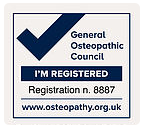If you are suffering from Sciatica with aching pain down the back of your leg into your calf and even your toes Kingston-based osteopath Hugo Firth has been successfully treating patients with this problem in Kingston and Norbiton for a number of years. Registered with GOsC and a member or the Institute of Osteopathy, he is a musculoskeletal specialist, who combines osteopathy with 3D Functional movement, developed by the Gray Institute. He also uses sports massage, trigger point therapy and medical acupuncture to treat his patients.
What is Sciatica?
It is pain and or numbness that can follow the sciatic nerve. Patients can experience pain anywhere from the buttock and down the leg, all the way into the foot. The Sciatic nerve is the longest, thickest nerve in the body. It starts from the base of your spine. It is approximately as thick as your index finger.
The two most common causes of sciatica can be found at the base of the spine or in the buttock. There are other causes of sciatica but here are we focus on the most common.
Most common Causes of Sciatica
Cause 1
Compression of the nerve as it exits the spinal column
This can be due to either a disc bulging out and pressing on the nerve itself or local inflammation at a joint with associated muscle spasm. Bending to the side of the sciatica normally aggravates sciatic pain symptoms as does sitting for long periods or walking. Pain is often described as burning, aching and numbness anywhere from the buttock down to the foot.
What can be done
The key to reducing the pain away is take the pressure off the nerve by reducing swelling and improving disc health.
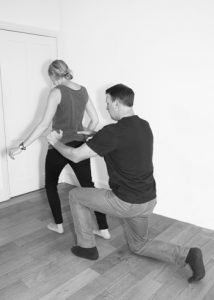
Osteopathy treatment in Kingston
This is achieved with a combination of joint articulation, muscle therapy, medical acupuncture and therapeutic exercise to address the cause of the injury. Expert advice is also provided for you to help yourself in between treatments to help your body heal itself.
Cause 2
Compression of the sciatic nerve by the Piriformis muscle
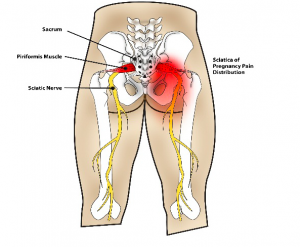 In this diagram you can see that the sciatic nerve passes very close to one of the pelvic muscles called Piriformis (called this because it is the shape of a pyramid).
In this diagram you can see that the sciatic nerve passes very close to one of the pelvic muscles called Piriformis (called this because it is the shape of a pyramid).
Walking and sitting for long periods aggravates it. The Piriformis muscle becomes very tight and compresses the sciatic nerve. This is often due to an imbalance of muscles around the pelvis causing a slight rotation. Patients often feel ‘twisted’. It can often happen during pregnancy as the pelvis adapts to the changing position of the foetus.
What can be done
In the first instance the pain is addressed by reducing the tightness in the Piriformis itself.
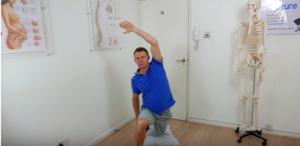 This is followed by the muscle imbalance that caused the ‘tightness’ in the first place through a series muscle releases and specific exercises to address the pelvic rotation and importantly give you the means to keep it that way.
This is followed by the muscle imbalance that caused the ‘tightness’ in the first place through a series muscle releases and specific exercises to address the pelvic rotation and importantly give you the means to keep it that way.
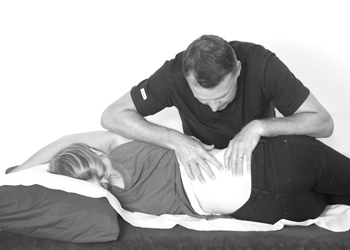
Using Video to help the healing process
Hugo also facilitates his patients’ recoveries by videoing his patients practising their exercises, with their permission, so they complete them effectively and properly at home to accelerate their recovery time. As a patient you will also have access to his dedicated YouTube channel, for Therapeutic Exercise where a library of specific exercises can be found to help you recover and give you a useful reference point for the future.
For more information about osteopathic treatments, please call Hugo on 020 8226 3767.







